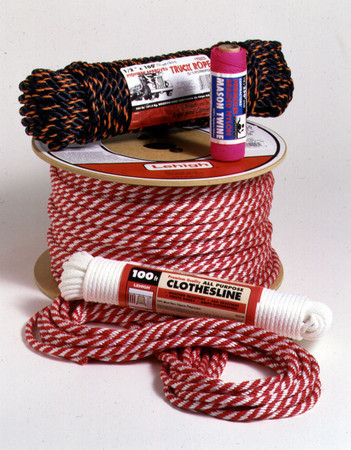Get properly secured

When the thermometer hits the triple digits, most of us want to just spend the day hanging around. And most of us have probably not given much thought to which type of rope is the best for the backyard hammock.
The experts at Secureline, a major supplier of cordage in North America, know how important selecting the right type of rope can be in making sure your summertime plans don’t leave you hanging in the breeze — that is unless that’s exactly what you want to do, in which case you would select an all-purpose solid braid or twisted nylon rope. These types of ropes resist abrasion, sunlight, rot and mildew and are ideal for tree swings and hammocks.
“When standing in front of a lot of ropes it can be overwhelming,” said Craig Zurko, marketing manager for The Lehigh Group, Secureline’s parent company. “One way to start narrowing the choices is to choose the material.”
According to Jamie Ibrahim, product manager, ropes come in three basic materials: nylon, polyester and natural. Figuring out which type to purchase is “knot” that difficult.
She said each material has unique properties that are best suited for specific activities.
“Nylon is basically the strongest material. It has a little bit more elasticity and is the most durable. Polyester’s main feature is that it floats and is lightweight. The naturals are biodegradable and ties knots well.”
So, Ibrahim recommends polyester ropes for water activities, nylon braid for swings and hammocks where strength is needed, and any rope made of a natural material for the garden or yard. “It flows with the natural theme.”
“Generally, if you have a specific project in mind, it will help you figure out what type of rope to get,” Zurko said.
Even keeping that in mind, Zurko added that rope really is versatile and different materials can be used for a variety of purposes. The main thing to check is the rope’s safe working load limit.
Ropes are rated by their working load limit, which measures the load limit or point where it will snap or break, Zurko said. This information is featured on each package of Secureline’s rope.
For example, if you go to a furniture store and buy a mattress and you plan to take it home by tying it to the top of your car, the load limit would be more important than the type of material the rope is made out of, he said.
“You’d be more worried about the (rope’s) length and strength. If you’re going down the highway, look for stronger ropes.”
Generally speaking, he said the larger the diameter of the rope, the stronger it is. Rope is available in a multitude of diameters, ranging from one-eighth of an inch to 1 inch.
“When it comes to rope, there are so many uses,” Ibrahim said.
In addition to a rope’s length and strength, each package also includes an instruction sheet about the proper way to tie specific knots.












